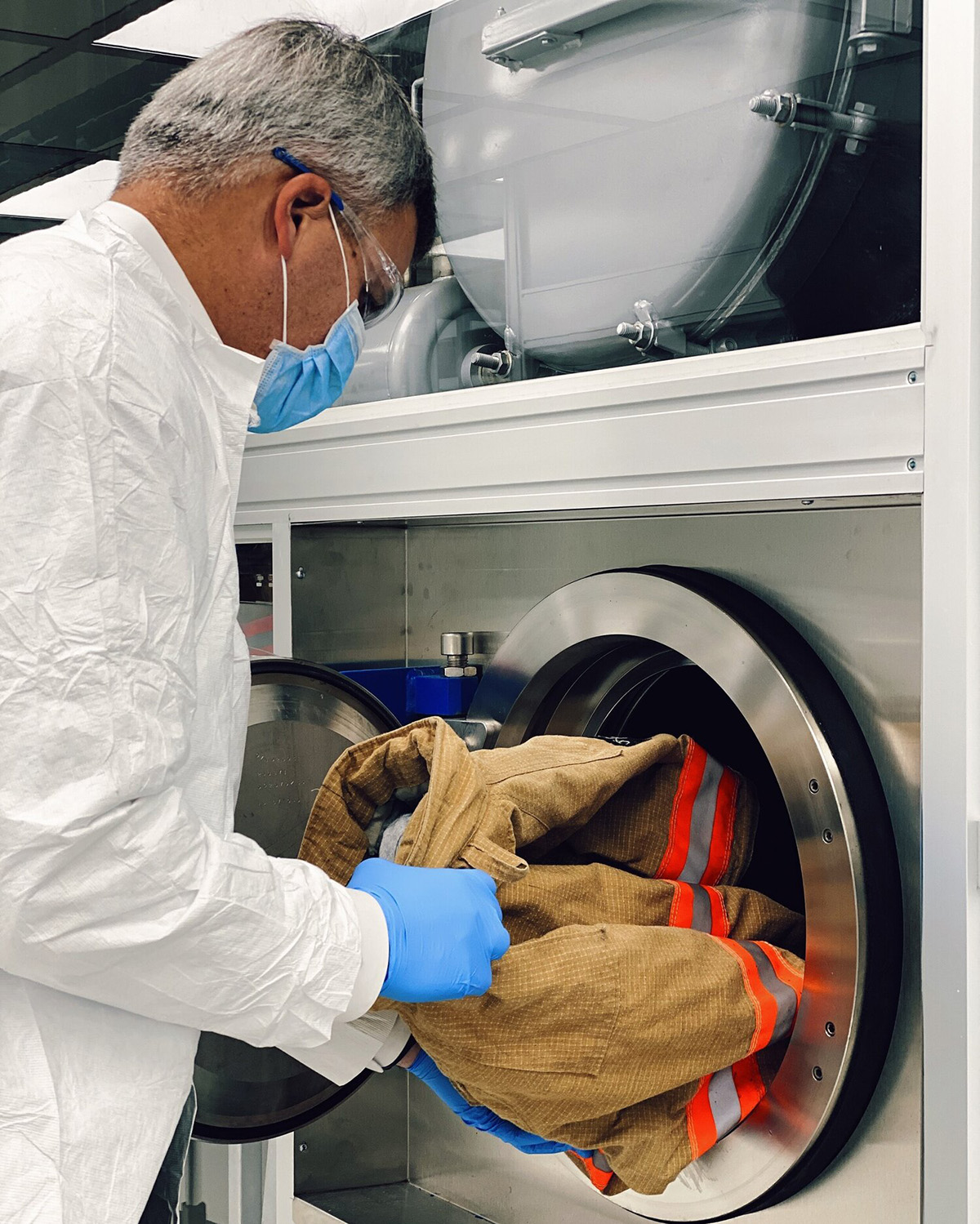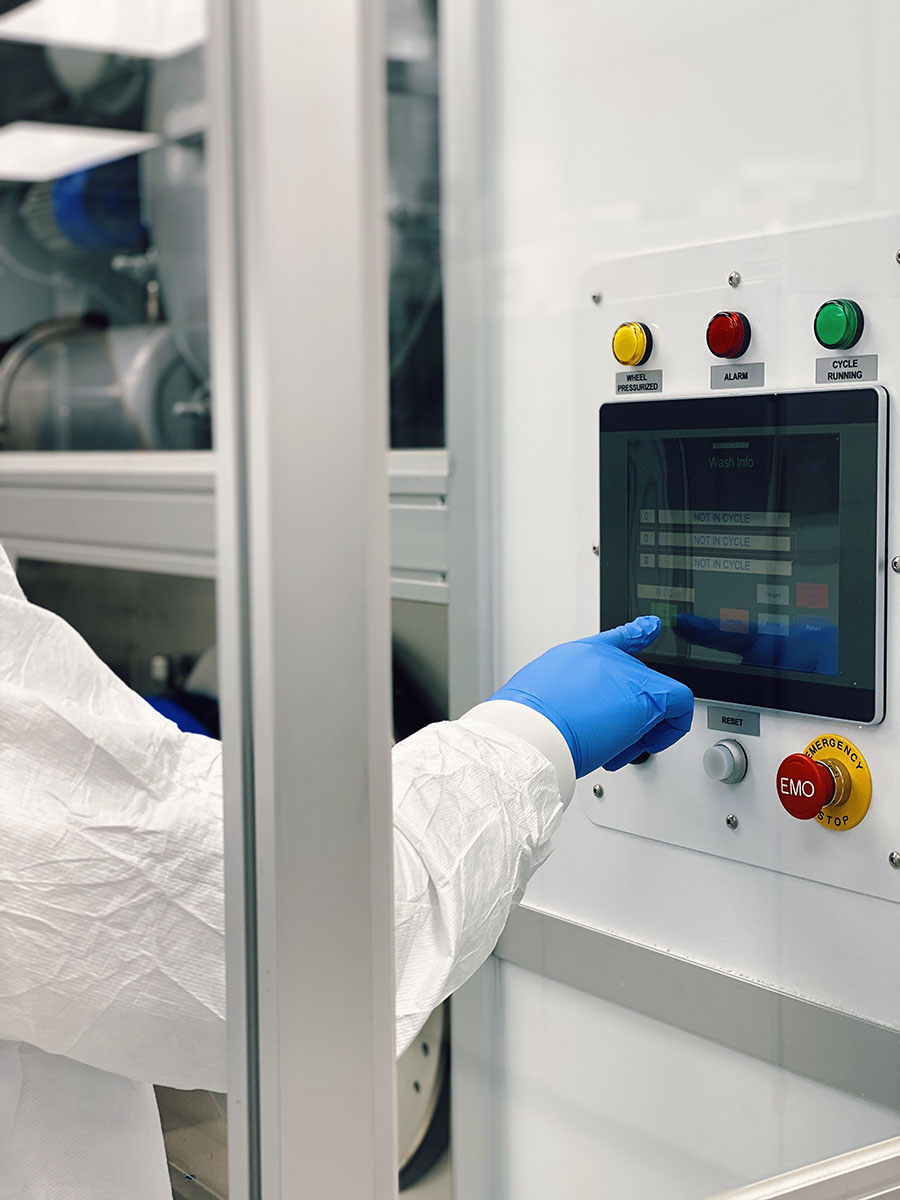By: Emergency Technical Decon Team
Firefighters face some of the most dangerous working conditions in any profession, not just from flames, but from the hidden risks that linger long after the call is over. Cancer, cardiac incidents, and respiratory illness are among the leading causes of firefighter death, and the path to prevention starts long before a diagnosis.
Departments can and should take proactive steps to protect their crews. Here are key actions every fire agency can implement to help keep firefighters healthy for the long haul.
1. Implement a Consistent Gear Cleaning Program
Turnout gear absorbs toxic compounds like PFAS, PAHs, SVOCs, and heavy metals. Without regular, thorough cleaning, these substances build up over time. Heat, sweat, and skin contact can then drive them into the body. Departments should adopt protocols that include on-scene gross decontamination using wipes or rinse-downs, bagging contaminated gear before returning to the station, and routine advanced cleaning with proven technologies like Liquid CO2+.
ETD’s Liquid CO2+ system removes 84% of PFAS, 99.9% of SVOCs, and 99.8% of heavy metals—all without degrading gear or creating hazardous wastewater.
2. Support “Shower Within the Hour” Protocols
After exposure, time matters. Firefighters should shower and change clothes within 60 minutes of incident response. Clean and dirty gear should be stored separately to avoid cross-contamination, and contaminated gear must never enter living quarters or personal vehicles.
3. Offer Annual Physicals and Cancer Screenings
Annual physicals and cancer screenings help catch problems early. A thorough health checkup should include bloodwork, cancer marker tracking, cardiovascular and pulmonary assessments, dermatological exams, and a documented exposure history.
4. Invest in Mental Health Resources
The psychological impact of emergency response can be just as dangerous as the physical risks. Departments should provide access to mental health counseling, peer support teams, resiliency training, and crisis response resources after traumatic events. Building a culture where mental health is prioritized helps crews feel heard, supported, and ready for the next challenge.
5. Improve Air Management Practices
Inhalation hazards don’t stop when the fire is out. Crews should stay on SCBA air through overhaul and beyond until air quality is confirmed safe. Leadership should enforce proper air discipline, train crews on air management strategies, and monitor conditions to minimize inhalation risks.
6. Maintain Clean and Safe Stations
Contamination from the fireground can spread to the station environment. Departments should ensure PPE is stored in designated gear rooms separate from living areas, apparatus bays are well-ventilated, and laundry facilities are available for routine uniform cleaning. Clean workspaces support overall health.
7. Lead by Example
Leadership sets the tone. Officers and department heads should model healthy habits, prioritize fitness and nutrition, and allocate funding toward prevention initiatives—not just response. When health is a department priority, it becomes a firefighter priority too.
Firefighter Health Is Everyone’s Responsibility
Protecting your crew means looking beyond the fireground. It means making health protection part of daily operations, from how gear is cleaned to how mental health is supported.
At ETD, we’re proud to be part of that mission. Our Liquid CO2+ decontamination technology gives departments a powerful tool in the fight against occupational illness—without compromising safety, compliance, or gear performance.
Want to learn more about how your department can improve firefighter health outcomes? Contact ETD today to explore our services. Because healthy gear means healthy firefighters, and that’s a win for every community.



